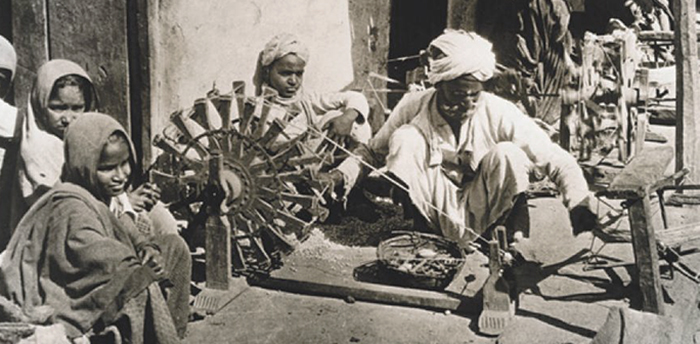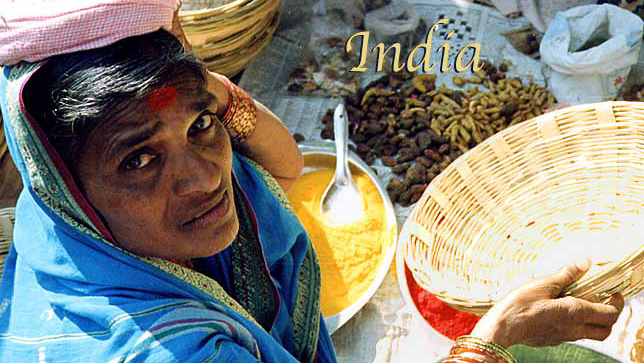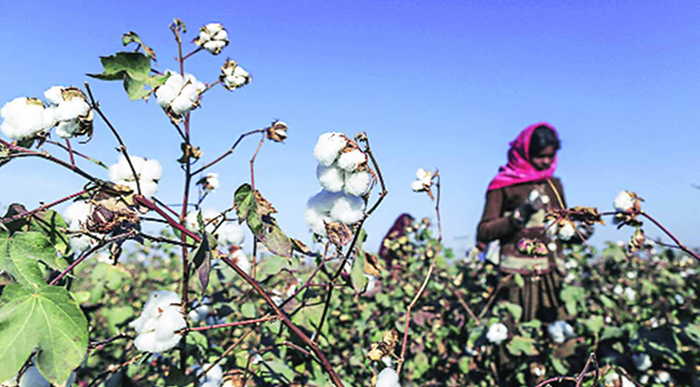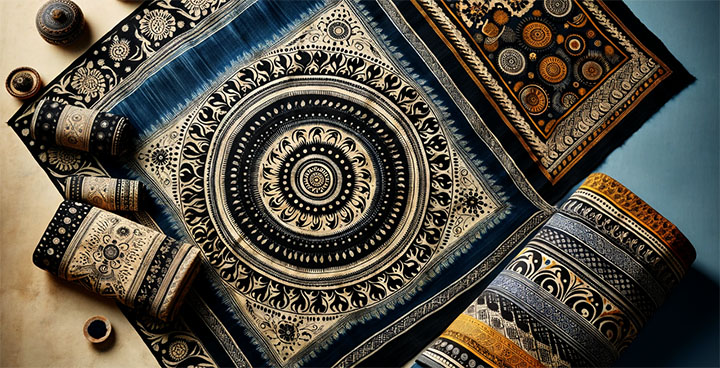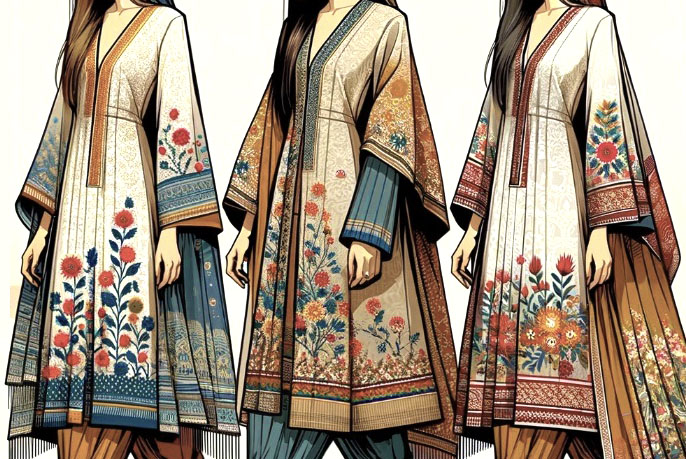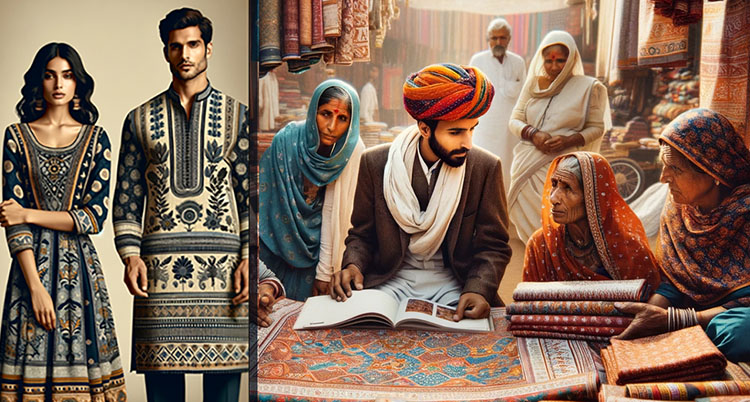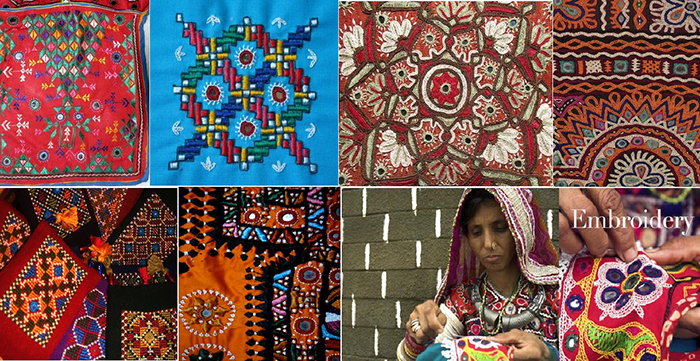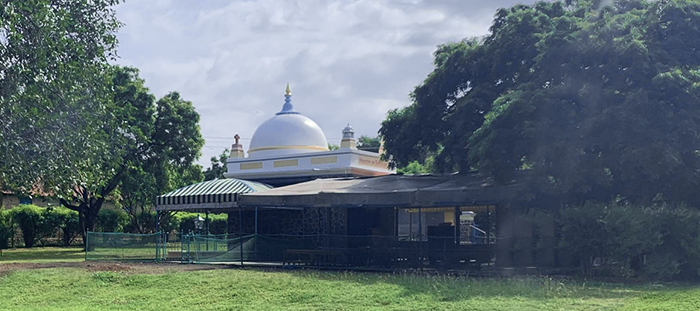INDIA'S COTTON KHADI
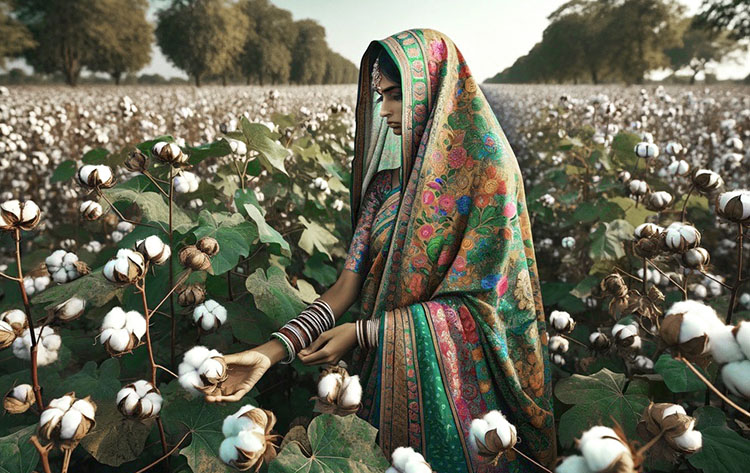
Home Grown, Spun, Woven |
Hand-spun textiles have been a defining characteristic of India's fabric industry for centuries. The indigenous production of these textiles gained significant prominence among freedom fighters, with Cotton Khadi emerging as a symbol of independence (from the British Raj). Khadi is crafted by hand in village homes using cotton yarn spun on a spinning wheel. This practice was strongly advocated by Mahatma Gandhi as a means to unify the diverse nation. Gandhi established institutions to foster the skills of spinning and weaving. In recent times, Prime Minister Modi has championed the revival of Khadi. Gandhiji Quotes: “I believe that where there is pure and active love for the poor there is god also. I see god in every thread I draw on the spinning wheel. The spinning wheel represents to me the hope of the masses”. From 3000 BC until the 1750’s, only the indigenous arboreum and herbaceum plants were used to grow cotton in India, known as old world cotton. Creating textiles from local, old world cotton is part of a vibrant national legacy. INDIA CONTENTS : JOURNEYS, FABRICS: SUPERSTRUCTURE -------------------------------------
cotton khadi products
Cotton Khadi, often referred to simply as Khadi, is a traditional Indian fabric known for its unique qualities and cultural significance. Khadi is hand-spun and hand-woven, making each piece unique. The process involves spinning cotton fibers on a spinning wheel, known as a 'charkha', to create yarn. This yarn is then woven into fabric. Due to its handmade process, Khadi has a distinctive texture that's often slightly rough to the touch. It's known for being breathable and comfortable, making it suitable for a variety of climates, particularly warm weather. Khadi is environmentally friendly. Its production is sustainable, consumes less energy and typically involves organic cotton, which is grown without harmful pesticides and chemicals.
The production of Khadi supports rural artisans and weavers across India, playing a significant role in the livelihood of many communities. Cotton Khadi is not just a type of fabric, but a symbol of Indian heritage, embodying the principles of simplicity, sustainability, and self-reliance. ---------------------------------- With a view to raising funds for the industry and organising weavers – cooperatives, Parliament passed the Khadi and other Handloom Industries Development Act in 1953. Khadi is now being used by fashion houses around the world. Khadi sales have grown by 30% in the last 4 years, thanks to the Modi lead government, which is now encouraging Khadi at all levels. Suresh Desai is a founding member of an Organic Farmers Club in Belgaum District. It has 400 members, some of whom are already growing food crops organically, while others are in the process of shifting to organic farming. It takes three years for a conventional cotton field to become fully organic. -------------------------------------- --------------------------------------
Cotton varieties Organic Cotton: A Sustainable ApproachOrganic cotton farming emphasizes sustainable and eco-friendly practices. This method shuns synthetic fertilizers and pesticides, relying instead on natural alternatives like compost, biological pest control, and crop rotation. Organic cotton is gaining popularity due to its minimal environmental impact and the growing global demand for sustainable fabrics. The challenges include lower yields and higher costs due to intensive labor and the lengthy certification process. The idea of forming an organic farmer’s collective struck one farmer and it gradually grew to include around 30 farmers from nearby villages. The State Government approached them to help convert pesticide farms into organic ones. As of today, they have two projects which are underway at Naganur and Hukkeri.” In the case of the organic farmer’s collective, they have eliminated the middlemen from sourcing and selling. The products are available at Javik Society, Lalbagh and Organic Junction, Malleshwaram in Bengaluru (Bangalore). Arun Ambatipudi, executive director of Chetna Organic, one of a few nonprofits that provides training and support to organic cotton farmers in India, a growing demand, supply that’s in decline.
BCI Cotton: Balancing Productivity and SustainabilityThe Better Cotton Initiative (BCI) is a global effort to improve cotton production for farmers, the environment, and the sector's future. BCI cotton in India promotes practices that reduce environmental impact, such as efficient water use and care for soil health, while also considering socio-economic aspects like labor rights. BCI doesn't outright ban pesticides but encourages reduced and safer use. The initiative helps farmers increase yields and profits sustainably, though it requires adherence to specific standards and continuous learning. Bt Cotton: A technological GM leapBt cotton, a genetically modified variant, is engineered to resist certain pests. This technology has been widely adopted in India due to its possible effectiveness in reducing crop losses and decreasing pesticide use. However, concerns regarding biodiversity, pest resistance, and the socio-economic impact on small farmers are ongoing. Bt cotton symbolizes a high-tech approach in Indian agriculture, blending traditional farming with modern biotechnology. GM cotton seeds are expensive and farmers are not allowed to use the seeds from their crops for the next planting. So many have gone bankrupt due to this, some have commited suicide due to this. Traditional cotton farming.Conventional cotton farming, still prevalent in many regions of India, relies on chemical fertilizers and pesticides. This method focuses on maximizing yields and is often the go-to for farmers seeking immediate and effective pest control. However, it poses significant environmental risks, including soil degradation, water pollution, and harm to non-target species. The increasing resistance of pests to chemicals and health concerns for farmers and consumers are leading to a gradual shift towards more sustainable practices. ----------------------------------- Why seek out organic cotton? Non organic cotton (100% cotton labels) can be the world's dirtiest crop due to its heavy use of pesticides. Risks to Goats Grazing in Treated FieldsGoats, when pastured in harvested cotton fields, may consume the remaining cotton seeds and plant matter, which might still contain traces of insecticides. The risk to the goats depends on several factors: Insecticides have varying residual periods — the duration they remain active in the environment. Longer residual periods mean higher risk of exposure for the animals. Exposure to insecticides can lead to various health issues in goats, ranging from mild to severe, including:
In severe cases, ingestion of high levels of insecticides can lead to death. Younger or weaker animals are particularly at risk. ----------------------------------------- In 2009, India’s agricultural export agency discovered wide-scale fraud i the country’s cotton belt, with entire villages certifying genetically modified cotton as organic. The paper-based certification scheme; “It led to a lot of cheating.” INDIA CONTENTS : JOURNEYS, FABRICS: SUPERSTRUCTURE
India cotton production
Surat: 'Old Bombay Market' is known for its textile collection and is also known as the best Surat wholesale market, it is a must-see place for anyone looking for high-quality textile clothing. Maharashtra is the second leading producer of cotton in the country. Cotton is grown in Maharashtra, as it grows well in well-drained clayey soil and because of black soil there. Excellent climatic conditions exist in Maharashtra. Rajasthan: Ranakpur is a village located in Desuri tehsil near Sadri town in the Pali district, It is located between Jodhpur and Udaipur, The beautiful Maru Gurjara Art developed during the early sixth century period in and around Rajasthan. The ancient Rajasthani art had the genesis of its name from the ancient Rajasthan and Gujarat, both the states had very similar ethnic, cultural and political aspects. Maru Gurjara...‘Art of Rajasthan and Gujarat’.
Rajasthan is the state which has made use of all the colors. Rajasthan is also famous for hand block printing. The remarkable and magnificent combination of pink, red, orange and purple, . The specialty of Rajasthan block printing is floral print and pattern which are prepared with vegetable color. Of the 862 spinning mills in India, 69 spinning mills are in Rajasthan.
INDIA - SILKS ------------------------------------- WOOLS - EMBROIDERY ----------------------------------- INDIA - CHIKAN - LINEN ------------------------------------- article and website composed by elenagh@live.com
Avatar Meher Baba Samadhi - Tomb Shrine. Meherabad The Samadhi can be visited directly from either Pune or Ahmednagar. You need to hire a car with a driver who knows how to drive to the parking up the hill, near the Samadhi. Open to everyone from 7 am to 7 pm. Information about Meher Baba: https://avatarmeherbabatrust.org/ |
| Avatar in India Index | ||||
VISIT INDIA --------------------------- |
VISIT INDIA ---------------------------- |
VISIT INDIA --------------------------- |
||
| • HIMALAYAN VALLEYS | ||||
|
